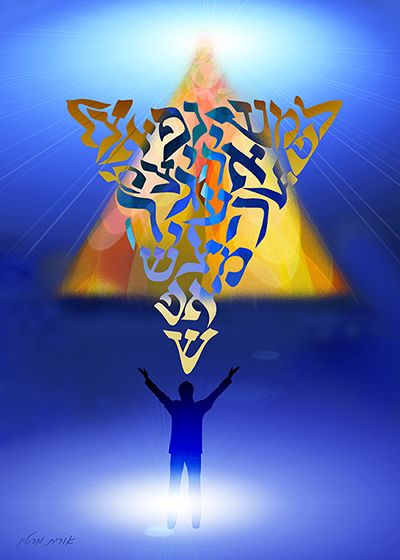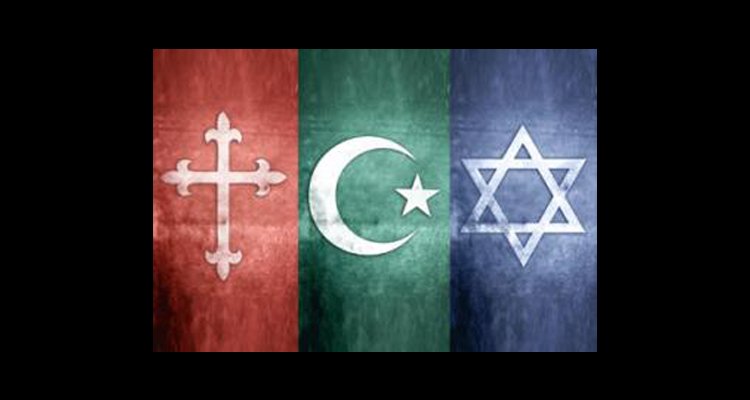
SEAN-O-VISTA
Christianity
Gnosticism
WRITTEN BY Michael Williams
Professor of Near Eastern Languages and Civlization, University of Washington, Seattle.

Gnosticism, any of various related philosophical and religious movements prominent in the Greco-Roman world in the early Christian era, particularly the 2nd century.
The designation gnosticism is a term of modern scholarship. It was first used by the English poet and philosopher of religion Henry More (1614–87), who applied it to the religious groups referred to in ancient sources as gnostikoi (Greek: “those who have gnosis, or ‘knowledge’ ”). The Greek adjective gnostikos (“leading to knowledge” or “pertaining to knowledge”) was first used by Plato to describe the cognitive or intellectual dimension of learning, as opposed to the practical. By the 2nd century CE, however, the name gnostikoi had been adopted by various Christian groups, some of which used it positively as a self-designation, though others criticized the practice as a presumptuous claim of exclusive access to truth.
Definition
Consensus on a definition of gnosticism has proved difficult. The groups conventionally classified as gnostic did not constitute a single movement with relatively homogeneous organization, teachings, and rituals. Even the self-designation gnostic is problematic, since it is attested for only some of the traditions conventionally treated as gnostic, and its connotations are ambiguous. Whereas some researchers argue that the term gnostic should be restricted to the sects or schools that called themselves by that name, others extend the category to include additional religious movements that allegedly shared various distinctive features. Still others treat gnosticism as a world religion that existed from antiquity to early modern times—surviving, for example, in the mythology and ritual of the Mandaeans of Iraq and Iran (see below Influence).
Many of the so-called gnostic groups are characterized by a mythology that distinguishes between an inferior creator of the world (a demiurge) and a more transcendent god or order of being. Another frequently encountered theme is that there is a special class or race of humans that is descended from the transcendent realm and is destined to achieve salvation and to return to its spiritual origins. Salvation is understood as a revelation that reawakens knowledge (gnosis) of the race’s divine identity; in contrast, the traditional Christian emphasis is on redemption through the death and resurrection of Jesus Christ. Although the myth of a demiurge and the theme of reawakened awareness of divine origins have parallels in Platonic and Neo-Pythagorean philosophy—and in fact were partly derived from those traditions—it is often asserted that in the gnostic myths there is a far sharper dualism, involving a much more negative attitude toward the inferior creator god, the material cosmos, and the human body.
Texts
Adversus haereses
The classic source for ancient controversies regarding groups conventionally classified as gnostic is Adversus haereses (Latin: “Against Heresies”), a five-volume work written in Greek about 180 CE by the Christian bishop Irenaeus of Lyon. Originally titled “Exposure and Refutation of Knowledge Falsely So-Called,” this extraordinarily influential work was studied, adapted, and expanded upon from the late 2nd through the 4th century by Christian writers including Clement of Alexandria, Tertullian, Hippolytus of Rome, Origen of Alexandria, and Epiphanius of Constantia. In Adversus haereses Irenaeus catalogs and criticizes the doctrines of various gnostic teachers and their followers from the 1st and 2nd centuries, devoting particular attention to Valentinus and other teachers who were said to have adapted Valentinus’s doctrines. He also reports on the teachings of other deviant movements, such as those of Simon Magus, Menander, Satornil (or Saturninus) of Antioch, Basilides, Carpocrates, Marcellina, Cerinthus, Cerdo, Marcion of Sinope, Tatian, and the Ebionites.
At one point Irenaeus mentions “the sect called gnostikê,” or “knowledge-supplying,” whose myths he claims had been adapted by Valentinus. He may have had in mind the teaching that he later summarized as that of certain gnostikoi—or “Barbelo-gnostikoi,” as the original text may have read. The summary of the myth is ambiguous at points, but it begins with a primordial aeon (eternal entity or age) named Barbelo and an unnameable Father, perhaps to be understood as female and male aspects, respectively, of the highest god. In any event, the Father and Barbelo generate a divine family of entities, each of which is a mythic personification of a divine faculty or attribute: Thought (a personification of the Father’s first self-thought), Foreknowledge, Incorruptibility, Eternal Life, and so forth. Among those spiritual entities is a perfect human named Adamas—a divine prototype of the earthly Adam of Genesis. Adamas is united with a consort, Perfect Knowledge (gnosis). The teaching thus provides a mythic account of how plurality (of divine attributes) originated from unity and how true humanity is also divine. The last divine entity to emerge is Wisdom. But unlike the other entities, Wisdom is said to be without a consort. Her attempt to find one, though well intentioned, leads her away from the supernal realm to lower regions, and she generates an inferior “first ruler” who then creates the material world.
The myth conveys the message that the biblical creator is only a parody of divinity. Life in this imperfect world does contain inklings of truth; human wisdom does have a relation to divine reality. Yet wisdom can go astray, and false gods can result. Humanity, in a state of spiritual amnesia before accepting the revelation of the myth, is awakened by reconnection with Perfect Knowledge.
Many scholars would reserve the term gnostic in the most proper sense to the sectarians who taught the myth. Irenaeus’s use of gnostikoi is somewhat confusing, however, since he sometimes seems to apply it to all of the groups he condemns rather than to only one or two sects—as when he refers to “Marcion or Valentinus or Basilides or Carpocrates or Simon or the rest of the falsely called ‘gnostics.’” Furthermore, it is uncertain from his report how many of those movements called themselves gnostic and whether those that did intended the term as a proper name indicating sectarian identity or merely as the assertion of a general quality (“informed” or “enlightened”). Later sources provide further information about the movements described by Irenaeus as well as about other groups, but they offer little help in understanding the term gnostikoi itself, which they sometimes apply to one or two specific sects and sometimes to a wide variety of groups deemed heretical.
Apocryphon of John
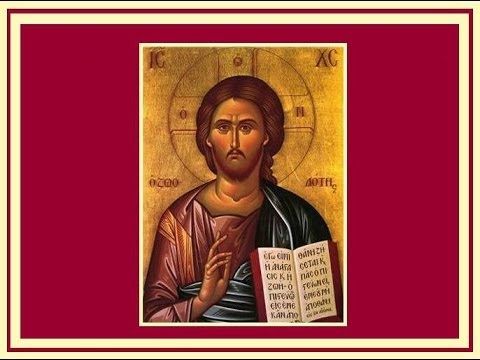
Until the 20th century the works of Irenaeus and other heresiologists (orthodox Christian writers who described unorthodox groups) were the principal sources of information about gnostic movements. Only a handful of manuscripts containing the authentic writings of such groups were known; they existed primarily in two sets of Coptic texts, the Askew Codex and the Bruce Codex, which were discovered in Egypt in the 18th century but not published until the 19th century. A third important Coptic text, known as the Berlin Codex 8502, was announced in 1896 but not published until the mid-20th century. In 1945, 12 additional codices and parts of a 13th codex, all probably dating from the 4th century, were discovered near the town of Nag Hammadi (now Najʿ Ḥammādī) in Egypt. The Nag Hammadi collection contains Coptic translations of more than four dozen writings that are diverse in type and content, including “secret sayings” of Jesus, non-Christian works belonging to the Egyptian Hermetic tradition, theological treatises, and lengthy mythological stories. Many of the works also contain doctrines or myths that were condemned by Irenaeus and other heresiologists.
Among the Nag Hammadi writings are three separate copies of the Apocryphon of John, an especially important gnostic myth; a fourth copy is included in the Berlin Codex 8502. Corresponding closely to the myth that Irenaeus ascribed to the sect called gnostikê, the Apocryphon purports to be a secret revelation from Jesus that was received in a vision by the apostle John. It conveys the true nature of the divine realm and its relationship to the material cosmos and humanity. While the transcendent god or invisible spirit is inconceivable and ineffable, the pleroma (Greek: “full perfection”) of the divine is a hierarchical family of personified aeons, who emerge as the fruit of the spirit’s self-contemplation or self-expression. For example, as in the myth described by Irenaeus, Barbelo emerges as the first thought of the transcendent god, and she is soon accompanied by Foreknowledge, Incorruptibility, Eternal Life, and others. The imperfect material realm is understood as a copy of the perfect spiritual realm, an idea partly derived from the Platonic doctrine of ideas, or forms. The myth also draws on the biblical theme of humanity as formed in the image of God (Genesis 1:26–27); true or divine humanity, however, is that spiritual family brought into being in the realm of perfection as the spirit’s image. That realm is the dwelling place of the spiritual Adamas, his son Seth, and the race or offspring of Seth.
The creator of the visible realm and of the earthly Adam and Eve of the biblical Garden of Eden is a lesser being, a ruler (archon) named Ialdabaoth, who is a dark caricature of the creator God of Genesis and the demiurge of Platonism. Wisdom, the lowest entity in the realm of perfection, creates Ialdabaoth in an unauthorized attempt to produce a likeness of herself. Ialdabaoth in turn creates the material cosmos and rules it with subordinate powers who are his own imperfect offspring. A willful and malevolent figure, Ialdabaoth is unaware of any power above him and is easily duped by providence into actions that either serve divine ends or are stymied by countermeasures from the divine realm. He does not realize that his cosmos is patterned after a more transcendent realm, and he ignorantly boasts that there is no god above him.
Several Nag Hammadi texts include myths that are similar to those of the Apocryphon of John. The tradition has sometimes been labeled “Sethian” because of the prominent role of the figure of Seth in several of those works. The origins of the Sethian mythology remain uncertain, but it may have emerged prior to the birth of Christianity or apart from Christianity in heterodox Jewish circles. It could then have been adapted by Christian writers who identified Jesus with the myth’s original revealer figure. In any event, there is significant diversity among the so-called Sethian sources, and they are probably best viewed as products of different stages of a complex series of religious innovations.
Valentinian Gnosticism
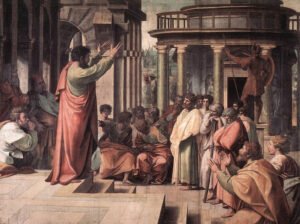
The category “gnostic,” however, has conventionally included still other movements. The most famous of them are the Valentinian traditions that Irenaeus and other heresiologists discuss at great length and which are also found among the Nag Hammadi works. The evidence regarding Valentinus himself is fragmentary but suggests that he was a Christian mystic with a Platonic approach to the interpretation of scripture. His contribution to the more elaborate mythologies of the Valentinian tradition, however, remains uncertain. That tradition typically involves a myth of the unfolding of the divine perfection in a genealogy of aeons, the last of whom is Wisdom.
Valentinianism recognizes a demiurge that is produced by Wisdom and is distinct from the true god. The creator of the material universe and humanity, the demiurge is not a malevolent figure, as is Ialdabaoth in the Apocryphon of John. Human beings possess a soul given to them by the demiurge, a spiritual element provided by Wisdom, and a body made from matter. The spiritual element, which is sometimes referred to as a “seed,” is that divine aspect of humans which is capable of eventual reunion with the spiritual realm. Valentinian sources often use the image of a school to describe the purpose of one’s existence in this world. Thus, through the discipline of life in general as well as through the instruction that was apparently an important aspect of Valentinian communal life, the spiritual person achieves the maturity necessary to be restored to the realm of perfection after the physical death of the body, while the soul remains with the demiurge in an intermediate place. Some sources distinguish not just three elements within human beings but also three different human types: spiritual, “soulish,” and material. Finally, the Valentinian tradition maintains that the role played by Jesus is primarily instructional: spiritual perfection and salvation are obtained by recognizing his divine nature and by discerning the hidden meanings of passages in the Gospels and other scriptures.
Diversity Of Gnostic Myths

As Valentinian tradition illustrates, the myths usually categorized as gnostic do not always demonize the creator, as was the case in the Apocryphon of John. What they share is not necessarily an extreme hostility toward the creator or the material cosmos but simply an interpretation of biblical narrative that introduces—in a variety of ways—inferior creators. For example, the myth that Irenaeus reports for the early 2nd-century teacher Satornil of Antioch seems to parallel many elements of the Apocryphon of John. Yet in Satornil’s myth the seven world-creating angels—one of whom is Yahweh, the God of the Israelites—are created by the transcendent god and rebel only later.
Another 2nd-century figure, Justin (not to be confused with the more famous Justin Martyr), taught that there were three original entities, a transcendent being called the Good, a male intermediate figure named Elohim (the God of Israel in the Hebrew Bible, or Old Testament), and an earth-mother figure named Eden or Israel. The world was created from the love of Elohim and Eden, and the first human couple were also created as a symbol of that love. Ironically, evil was introduced after Elohim learned of the existence of the Good above him and abandoned Eden to ascend to it. The ascent of Elohim entailed pain for Eden, whose consequent anger brought ills on humankind. Two writings in the Nag Hammadi library, the Nature of the Archons and On the Origin of the World, contain a figure named Sabaoth, one of the sons of Ialdabaoth, who is reminiscent of Justin’s Elohim. When Sabaoth realizes that there is a higher realm, he undergoes a kind of conversion, condemns Ialdabaoth, and is enthroned above him.
Marcion of Sinope (born c. 110 CE) taught a similar myth. He considered the father of Christ to be completely distinct from the creator God of Judaism and saw only contrasts between Jewish religion and the Christian Gospels. Human salvation, announced by Jesus, came from the father as an offer of pure grace and as a rescue from the system of the stern creator. The creator in Marcionite doctrine is not an offspring of a higher realm like Ialdabaoth or the Valentinian demiurge, and Marcion had no mythology of a special race of humans descended from a transcendent realm. His doctrine is therefore often considered to be only a relative of “gnosticism.”
The attraction of such myths lay especially in their solutions to problems of theodicy (the attempt to reconcile the goodness and justice of God with the existence of evil in the world), since distinguishing a lower creator absolved the higher deity of responsibility for evil or imperfection in the cosmos. The myths also addressed problems concerning the interpretation of scriptures (including Genesis) in which human qualities, such as jealousy or anger, are ascribed to the creator. Similar doctrines of lower demiurges were already current in late Hellenistic philosophy, and for some Christians (and perhaps earlier for some Jews) an interpretation of biblical tradition along those lines would have seemed only sensible. Opponents such as Irenaeus, on the other hand, considered such doctrines to be pagan corruptions of true monotheism.
Beyond their frequent inclusion of a demiurgical myth, gnostic sources vary significantly in other respects, though there are identifiable clusters of sources that have far more in common, such as the Sethian or Valentinian groups. Very often there is a doctrine of the preexistence of the soul or spirit, the soul’s incarnation and imprisonment within the body, its eventual rescue and ascent, and sometimes its reincarnation—themes that were also common in Platonism or Neo-Pythagoreanism. Those themes also can be found in Christian texts that lack any myth of a lower demiurge, such as the Exegesis on the Soul, which appears in the Nag Hammadi collection.
Research on new sources, such as those from Nag Hammadi, also called into question several conventional generalizations about gnosticism. In the area of ethics, for example, there is little evidence to support the belief that gnostics were either extreme ascetics or libertines. Many gnostic traditions are ascetic, but others seem to assume the institutions of marriage and family. The occasional charges of libertinistic practices from opponents remain problematic and are unsupported by original writings such as the Nag Hammadi texts. Language about a spiritual race or class of humans saved by revelation has often been understood to imply a characteristic gnostic determinism, yet that notion has proven to be another questionable stereotype. The Apocryphon of John, for example, seems to envision eventual salvation for everyone except those who knowingly reject the revelation after having received it. Similarly, although gnosticism is often associated with docetism—the notion that divine participation in human experience (such as Jesus’s suffering by crucifixion) is only apparent and not real—the Nag Hammadi tractate Melchizedek, which displays features of Sethian gnosticism, is explicitly critical of docetic interpretations of Jesus’ life and suffering.
Certain writings often labeled “gnostic” have attracted unusual popular interest but illustrate the difficulties in such classification. The Nag Hammadi Gospel of Thomas, for example, does not include any extended mythic narrative, and there is doubt about whether it is justifiably classified as gnostic. It consists entirely of a series of secret sayings ascribed to Jesus, several of which have close parallels in the New Testament Gospels. Although scholars are divided on the issue, some contend that certain elements of the Gospel of Thomas are among the oldest witnesses to Jesus’ words. Surviving Greek fragments do suggest that versions of the Gospel of Thomas existed at least as early as the 2nd century.
A Coptic version of the Gospel of Mary is partially preserved in the Berlin Codex 8502, and there are two earlier Greek fragments from the 3rd century. The text has evoked much popular interest, primarily for the prominence it gives to Mary (probably Magdalene, though some have argued that it is Jesus’ mother), who is privileged here with special visions not shared by the male apostles. The importance of spiritual insight appears to be a leading theme in the Gospel of Mary, but what survives of the writing contains no myth of a lower creator, and there is disagreement about the gospel’s relation to so-called gnostic traditions.
The highly debated Gospel of Judas was found in a 4th-century papyrus manuscript, the Codex Tchacos, which also contained at least three other writings, two of which were found in the Nag Hammadi collection. The codex was discovered in Egypt in the 1970s but was subsequently acquired by and passed among collectors in Europe and the United States for years. The delay in proper preservation by experts resulted in severe damage to the manuscript. When the codex was finally published in 2006, sensational attention swirled around the Gospel of Judas. Although Irenaeus briefly mentioned a “Gospel of Judas,” no gospel with that name had been found (and some scholars still question whether the Tchacos Judas is the same as that referred to by Irenaeus). Public curiosity was particularly aroused by early suggestions that Jesus in the Tchacos text praises Judas as a hero rather than calling him a traitor. Subsequent scholarly analysis, however, resulted in spirited debate on the point. Some argued that Judas is in fact demonized and is associated with demiurgical powers in the writing’s elaborate myth, which seems to draw on traditions similar to those in Sethian works. The poor preservation of the manuscript has allowed for such disparate analyses. In any event, this most curious writing is another indisputably important witness to the sheer diversity among so-called gnostic works.
Influence
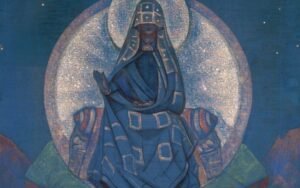
Although gnostic movements of various types flourished in the formative period of Christianity, they were likely a minority in most places. At a time when there was still no fixed Christian Bible or uniform church organization, their often elaborate creation myths and eschatologies constituted some of the earliest attempts at a systematic articulation of Christian beliefs. Fundamental features of what eventually became Christian orthodoxy were shaped through controversy over such doctrines. For example, the arguments by which orthodox Christians defended so basic a doctrine as that Jesus was the son of the same God who gave the Torah to Moses were forged amid polemic against demiurgical myths such as those found in the Nag Hammadi writings. The orthodox creed that Jesus truly suffered and yet was fully divine as well as fully human was decisively influenced by early controversies over views found in Valentinian and similar traditions, which seemed to deny any real human incarnation to the divine Saviour.
Similar mythological traditions were also important in the formation of Manichaeism, a dualistic religious movement founded by the Iranian preacher Mani in the 3rd century CE and which survived for a millennium. Although Mani was persecuted and eventually martyred by Persian authorities, Manichaeism spread to the western Mediterranean and as far east as China and during the 8th–9th century was even embraced by Uighur rulers.
Modern Mandaean communities were formerly concentrated in southern Iraq and in Iran, but, by the beginning of the 21st century, persecutions had forced most of the perhaps 70,000 members of the ethnic group into diaspora communities all over the world. Some researchers argue that the roots of the complex mythology, baptisms, and other rituals practiced by modern Mandaeans are traceable to late antiquity and bear kinship with Sethian and ancient Manichaean myths. The Mandaeans may therefore be the “last gnostics.”
More About Religion
Features
Copyright © 2018 SEAN-O-VISTA

Powered with 

